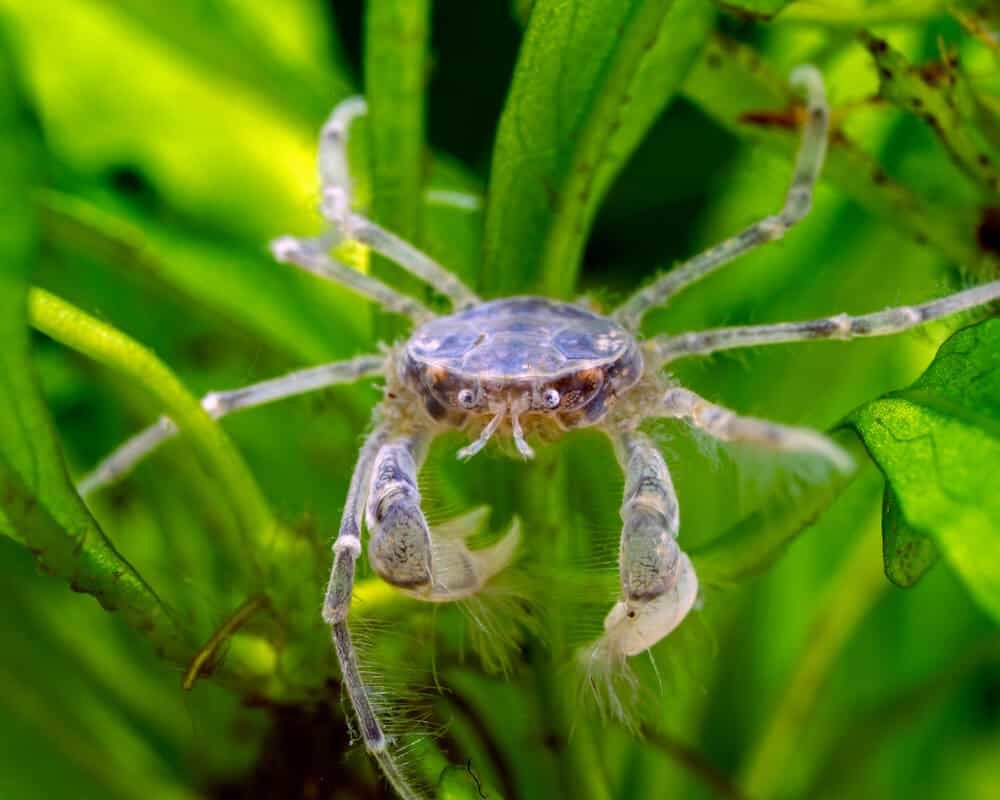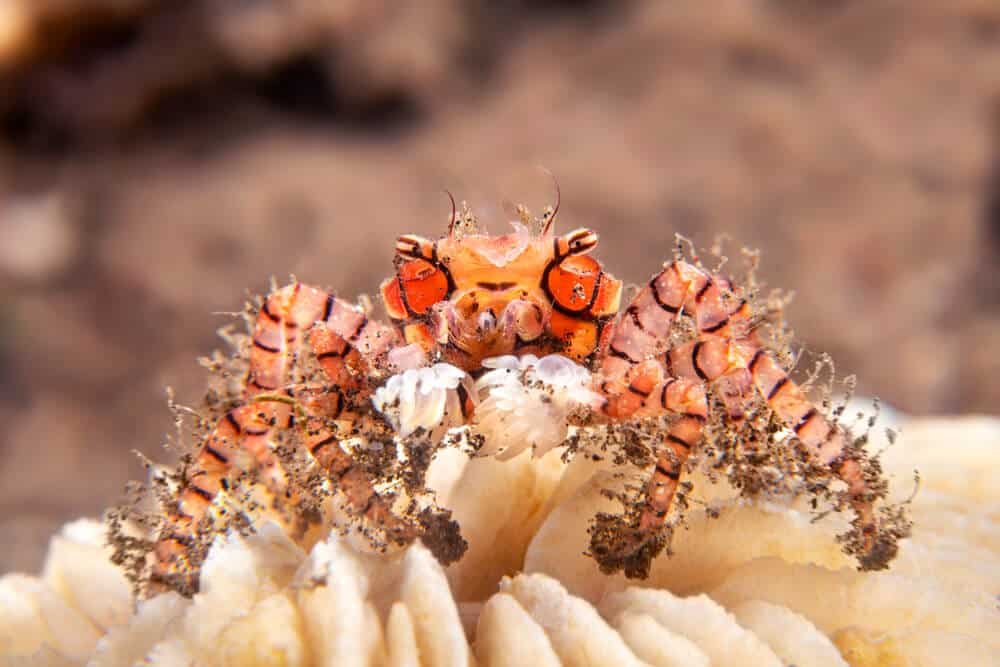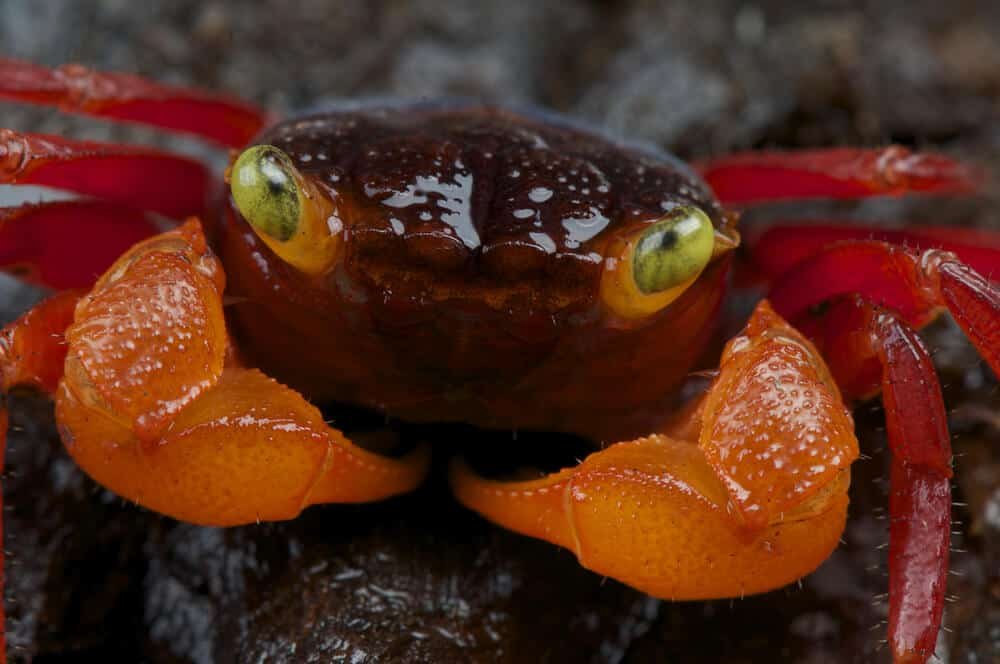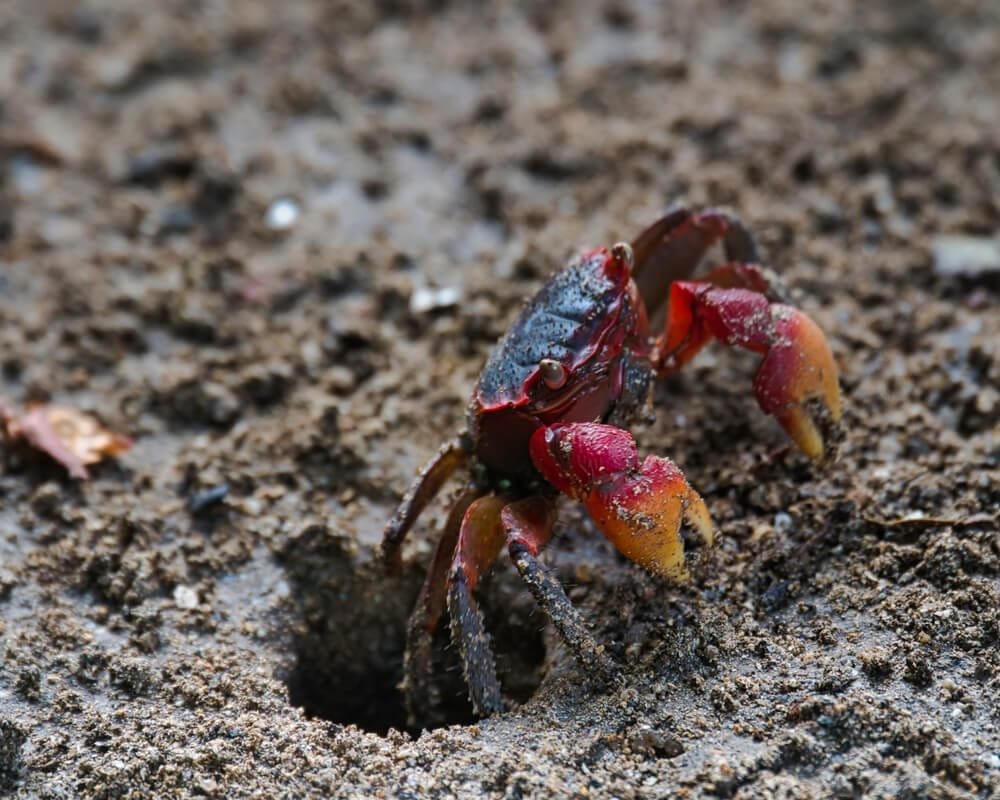How Long Can Fiddler Crabs Stay Underwater?
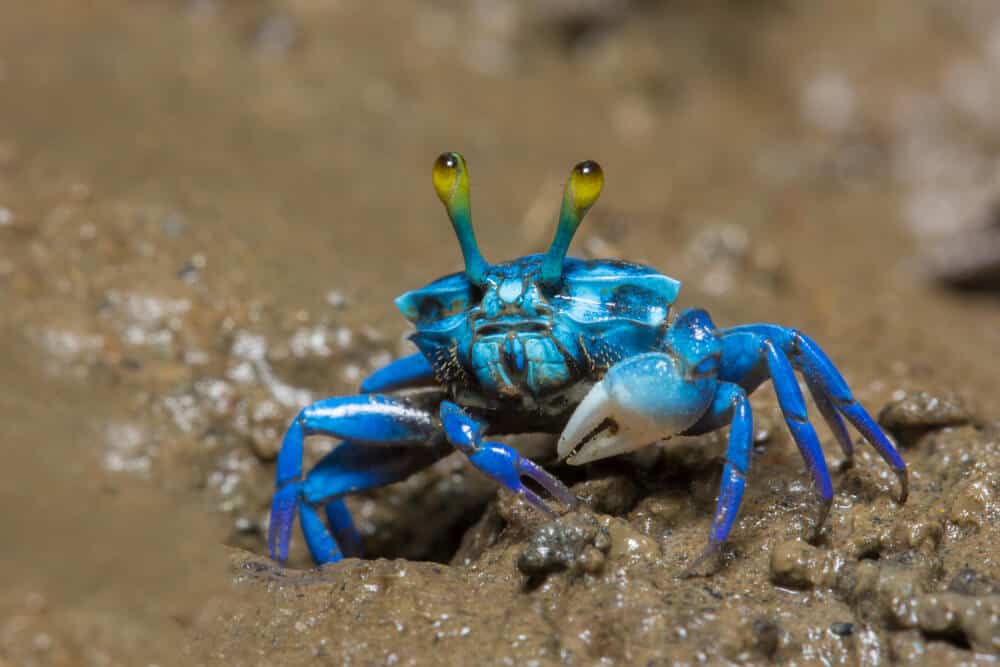
So, you want to add a fiddler crab to your aquarium collection. This fascinating sea creature can be the most adorable part of your aquarium ecosystem.
That’s why, in recent years, they have become one of the most popular household pets.
But before you get a fiddler crab, there are important facts that you need to know. Knowing this will help you decide how to design your aquarium to suit the fiddler crab’s needs.
One of the most important things to understand about them is that they are semi-aquatic creatures, which means they live partly on water and mainly on land.
The fiddler crab’s natural habitat includes mangroves, swamps, tidal creeks, sandbars, mudflats, and the like. Therefore, if you are to put them in the tank, the composition of the water must be partly fresh and partly salty.
If they partly live on the water, that means that you must mimic their habitat according to this characteristic.
If you are thinking of putting your fiddler crab and other aquatic creatures in just one big tank, think again. Unlike fish, fiddler crabs need a dry surface.
It is a common misconception among crab owners that crabs are water creatures. Fiddler crabs are distinct from other crab species because they cannot live entirely underwater.
Fiddler’s crab’s main activity is burrowing. It is only feasible when their aquarium has enough sand for them to do so. So, you must construct a substantial artificial sand coast on one side of their aquarium.
Can Fiddler Crabs Stay Long in the Water?
Can fiddler crabs stay long in the water? The answer is no. While they can survive in the water, they can’t stay in it for too long.
So, if you only have a tank with water and no provision for a sand part, your fiddler crab won’t survive. It’s because Fiddler can’t stay underwater for long.
Although they have gills like fish, they don’t need to be underwater to breathe through their gills.
A little bit of scientific explanation here is that on their underside, close to the base of their claws, crabs have an appendage called a scaphognathite, which they use to suck water (which includes oxygen) over their gills to breathe underwater.
But then again, fiddler crabs are not just any kind of crab. Allow them to stay underwater for a short period, then let them naturally go on land.
But, wait, aren’t there crabs that are caught in the middle of the ocean? Therefore, they can stay in the water. There are indeed species of crabs that can live in the water, but not the fiddler crab.
Fiddler crabs would rather stay in the sandy part of the beach or the muddy part of the mangroves than stay long in the water.
Although most aquatic crabs can breathe out of the water for 1–2 days, terrestrial crabs can breathe out of the water indefinitely, and it is in this category where the fiddler crabs belong.
All it takes for them to keep their gills moist is to breathe. Due to this, fiddler crabs are also required to live near water, as they need to wet their gills from time to time.
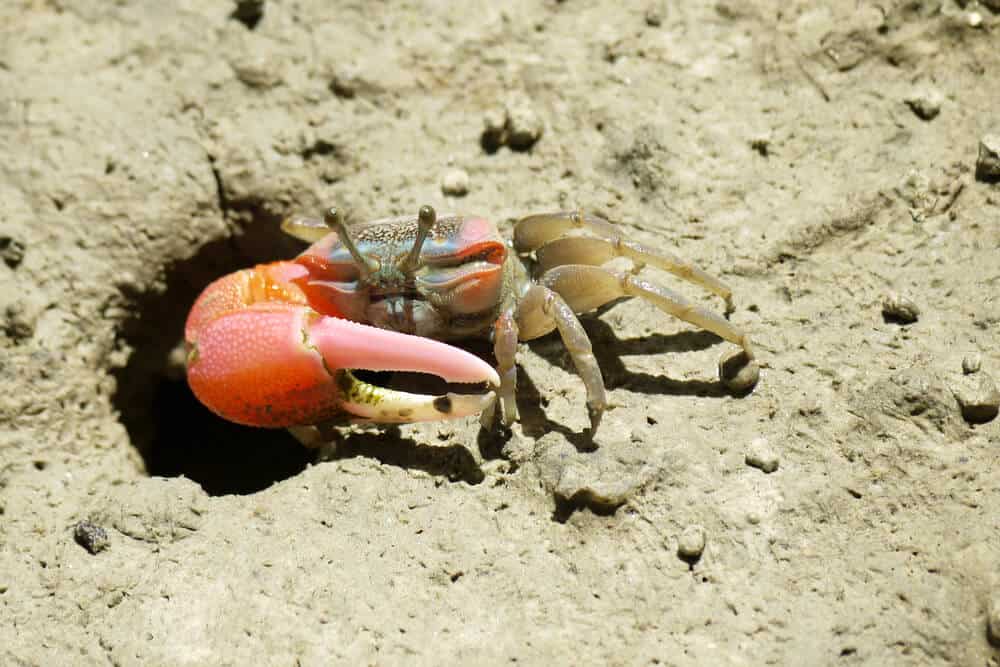
How Long Can Fiddler Crabs Stay Underwater?
So, just exactly how long can they stay underwater? Some experts say that an hour or two is the longest they can stay in the water. They need to climb out of the water to get some fresh air, otherwise, they die.
Salt marsh fiddler crabs are burrow-dwellers. Being air-breathers, they will perish in the water. They can breathe without access to water, but they require it to moisten their gills.
They like to burrow beneath big boulders and in the sand. They occasionally swim, relax for a while, and spend a lot of time digging through the sand for food.
So, make sure they have room to hide and more land than water.
They must have good access to land that is not very crowded or are not under a lot of stress. If your fiddler crab cannot go out of the water, find out the reason.
They’re probably adapting to their surroundings or are threatened. If you believe they cannot exit the water, consider setting up an aquarium or terrarium that mimics their natural habitat.
These low-maintenance fiddler crabs are often kept in small to medium-sized aquariums.
Make sure that there is enough room for them to explore on land. They may burrow underground, but the area above the land is equally important to consider as well.
So, be sure to remove any unnecessary obstacles that can stress your fiddler crab.
How to Make Your Fiddler Crab Happy in the Water
Because fiddler crabs are native to brackish areas in marshes and lagoons, their water must have some salt. 1 to 2 teaspoons of sea salt should be added to each gallon of water in his tank.
Instead of using table salt, seek out aquarium salt at your local pet store.
Your pet will love a heater to keep the water in the tank at 80 degrees, even if it is not necessary. To keep the water in your tank clean, use an internal filter.
The body of fiddler crabs is not adapted for swimming. Although they can swim upward, it is only up to a height of six inches and not more.
If these crabs are left in the water unsupervised for prolonged durations, they can potentially drown. To put it another way, don’t let them stay in the water for too long.
If fiddler crabs can’t stay in the water for long, they must be provided with a suitable place to stay and burrow themselves. Having a great stretch of sand where your adorable crabs can bask is recommended.
If you don’t have enough sand, an aragonite substrate may also be an excellent substitute for sand. Argonite substrate keeps the pH levels of the tank stable and gives your pets vital minerals.
Mimicking the natural habitat of these fascinating creatures will ensure that they thrive and live longer.
